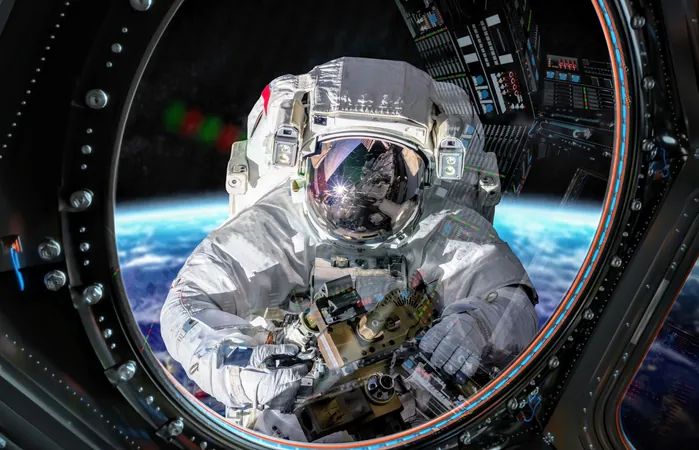
The Alarming Truth About Astronaut Eye Health: Are We Ready for Mars?
2025-01-28
Author: Ken Lee
Long-duration space missions are taking a toll on astronauts' vision, raising serious concerns about the feasibility of future manned missions to Mars. Research has shown that spending extended periods in microgravity significantly impacts ocular health, prompting scientists and space agencies into urgent discussions about astronaut well-being.
The Hidden Dangers of Microgravity
A recent study led by ophthalmologist Dr. Santiago Costantino from the Université de Montréal highlights how astronauts aboard the International Space Station (ISS) experience what’s known as spaceflight-associated neuro-ocular syndrome (SANS). Shockingly, over 70% of astronauts on long missions suffer from this condition, which can result in severe changes to vision.
Dr. Costantino's team studied data from 13 astronauts who spent between 157 to 186 days in orbit. Their research included a diverse group of astronauts, examining changes in critical ocular parameters before and after their missions. The findings revealed a concerning decrease in ocular rigidity by 33%, intraocular pressure by 11%, and ocular pulse amplitude by 25%. These measurements point to a significant alteration in eye health due to microgravity.
How It Works: The Science Behind SANS
The shift in bodily fluids in a weightless environment is a key factor contributing to these ocular changes. Dr. Costantino explained, “Weightlessness alters the distribution of blood in the body, increasing blood flow to the head and slowing venous circulation in the eye.” This phenomenon may lead to swelling in the choroid layer, which plays a crucial role in eye nourishment.
While astronauts usually see their vision return to normal after their missions, the growing length of planned space expeditions, particularly to Mars, poses new challenges. Unlike the ISS stays of six to twelve months, a round trip to Mars could last two to three years, intensifying the risks associated with SANS.
Looking Ahead: Solutions and Innovations
As researchers work closely with NASA to address these ocular health issues, they are exploring innovative solutions to mitigate risks. This includes wearable devices designed to help regulate intracranial pressure and techniques for simulating Earth-like gravitational conditions in spacecraft.
Additionally, dietary modifications and pharmaceutical approaches may provide further preventative strategies to limit detrimental effects on astronaut's eyes. Developing real-time diagnostic tools is critical, allowing astronauts and ground control to monitor eye health continuously during missions.
Protecting Our Astronauts: A Collective Effort
Ensuring the safety of astronauts on long-duration missions to Mars is paramount. Collaborations between researchers, space agencies, and medical professionals will pave the way for safer missions in the future. The consequences of neglecting ocular health could be dire, potentially jeopardizing not just individual astronauts but entire missions.
As the quest for Mars continues, understanding the profound effects of microgravity on human health remains crucial. With advancing technology and ongoing research, the space community is determined to find solutions that will not only protect the eyes of astronauts but also enhance the overall success of human exploration beyond Earth.
Stay tuned as the saga of space travel unfolds and we uncover more about the human body’s resilience against the challenges of the cosmos!



 Brasil (PT)
Brasil (PT)
 Canada (EN)
Canada (EN)
 Chile (ES)
Chile (ES)
 Česko (CS)
Česko (CS)
 대한민국 (KO)
대한민국 (KO)
 España (ES)
España (ES)
 France (FR)
France (FR)
 Hong Kong (EN)
Hong Kong (EN)
 Italia (IT)
Italia (IT)
 日本 (JA)
日本 (JA)
 Magyarország (HU)
Magyarország (HU)
 Norge (NO)
Norge (NO)
 Polska (PL)
Polska (PL)
 Schweiz (DE)
Schweiz (DE)
 Singapore (EN)
Singapore (EN)
 Sverige (SV)
Sverige (SV)
 Suomi (FI)
Suomi (FI)
 Türkiye (TR)
Türkiye (TR)